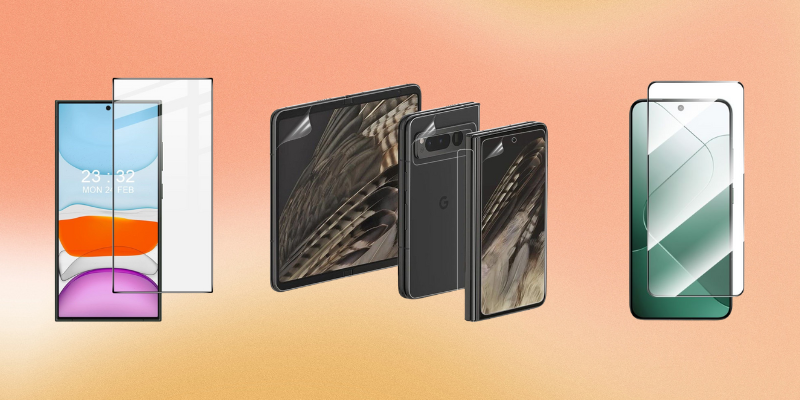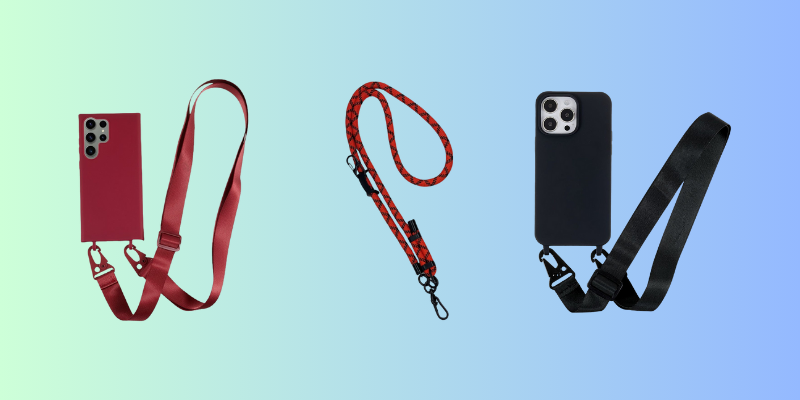Screens have quietly taken over large parts of our day - whether we're replying to messages, attending meetings, or catching up on news. On average, daily screen time hovers around six hours, a reflection of how deeply digital devices are woven into daily life. Phones, laptops, tablets - they all rely on one thing: power. And while battery technology has come a long way, higher performance often comes with greater energy demands.
Charging speed and reliability have become just as important as battery life itself. That’s why having a high-quality charger isn’t a luxury; it’s a necessity. It’s also practical to keep spare chargers in different places - your work bag, the car, a summer cabin - so you’re not caught without power when you need it most.
Check out our collection of chargers.

What do I need to consider when choosing a charger?
When selecting a new charger, it’s worth taking a moment to assess a few key factors. Not all chargers are compatible with every device, and choosing the wrong one can lead to a frustrating situation where you can’t charge your device. Your device’s power requirements, the type of charging cable you use, and whether you need features like fast charging or multiple ports all play a role. Understanding these elements up front makes it easier to find a charger that’s both safe and efficient - and ensures it keeps up with your daily routine.
Compatibility
When selecting a charger, compatibility goes beyond simply matching the voltage - it’s crucial to ensure the charger uses the right connector type for your device. For example, some Apple devices require Lightning connectors, while most modern Android phones and other devices use USB-C. Using a charger with the wrong connector type will not only prevent your device from charging but can also damage your device or the charger should you try. Always check the specific charging port on your device to ensure you choose a charger that fits. Additionally, some devices might support multiple charging standards, so it's important to choose the right cable and connector to take full advantage of fast-charging capabilities.
Cable length
Cable length might seem like a minor detail, but it can have a major impact on how and where you use your devices while they’re charging. A short cable - say, under one meter - might be fine for charging at a desk, but quickly becomes inconvenient if your power outlet is far from where you need to sit or work. On the other hand, a longer cable (around two meters or more) provides flexibility but can lead to more clutter or slower charging speeds if the cable is poorly made. For example, trying to charge your phone in bed with a 0.5-meter cable can be frustrating - whereas a longer, high-quality cable solves the problem without sacrificing performance.
Wireless charging
Wireless charging offers a convenient, cable-free way to power up your devices - but it’s important to understand both its benefits and its limitations before relying on it as your main charging method. While it reduces cable clutter and wear on charging ports, wireless chargers typically deliver power more slowly than wired options. They also require precise alignment between the charger and the device’s coil to work efficiently. For instance, placing your phone slightly off-center on a charging pad might cause it to charge slowly - or not at all. Wireless charging is great for nightstands or desks where convenience matters more than speed, but it’s not always the best option when time is tight.

Which are the most common chargers?
Now that we’ve covered some essential considerations when buying a charger, it’s time to explore the various types available on the market. Each charger type has its own set of features, advantages, and ideal use cases, which can make choosing the right one a bit more complex. Whether you’re looking for something compact for travel, or a high-powered option for fast charging, understanding the differences between them is key to finding the perfect match for your device.
Large assortment of different charging cables.
Lightning
Lightning chargers are exclusive to Apple devices, and they’re commonly used with iPhones, iPads, and certain models of iPods. Introduced in 2012, the Lightning port replaced the older 30-pin connector, offering a smaller, more versatile design that supports faster data transfer and charging speeds. Today, Lightning chargers are still widely used across Apple’s mobile product range, though many newer Apple devices, such as the iPhone 15, have transitioned to USB-C. For users with legacy devices or accessories that still rely on Lightning, this charger remains a vital part of their tech ecosystem.
USB-C
USB-C chargers have quickly become the standard for modern devices, thanks to their universal compatibility and fast charging capabilities. Unlike older connectors, USB-C is reversible, meaning you can plug it in either way, and it supports higher power delivery for faster charging. USB-C is used by a wide range of devices, including many Android smartphones, laptops, tablets, and even certain gaming consoles. It’s also the charging port of choice for the latest Apple products like the iPad Pro and MacBook series. As more devices adopt USB-C, it’s becoming the go-to connector for consumers seeking convenience and efficiency across a variety of tech products.
Wireless chargers - MagSafe & QI
Wireless chargers are especially popular for smartphones, smartwatches, and other portable gadgets. The most common wireless charging standards are Qi and MagSafe. Qi is the universal standard, compatible with a wide range of devices from various manufacturers, including most Android smartphones and earlier models of iPhones. MagSafe, on the other hand, is Apple's proprietary wireless charging technology, introduced with the iPhone 12. It offers a more secure charging experience by using magnets to align the device precisely with the charging pad, ensuring faster and more reliable charging speeds. While Qi chargers work with a variety of devices, MagSafe is exclusive to certain iPhones, providing added convenience and performance for Apple users.
Car chargers
Car chargers are a must-have for anyone who frequently travels or commutes, providing a convenient way to keep your devices powered on the go. These small adapters plug into the car's 12V cigarette lighter socket, converting the vehicle’s power into a suitable voltage for your electronics. Car chargers typically feature one or more USB ports, allowing you to charge smartphones, tablets, GPS units, and other devices while driving. Some models even offer fast-charging capabilities, helping you power up more quickly during short trips. With the increasing number of devices we carry, a reliable car charger ensures that you never run out of battery, even when you're on the road.
Take a look at our car chargers with dual USB ports.
Adapters
Wall adapters with multiple USB ports are an excellent solution for those who need to charge several devices at once without cluttering up multiple outlets. These adapters come in a variety of configurations, typically offering anywhere from two to six USB ports, and often support both standard charging and fast-charging technologies. Many models also feature smart charging, which automatically detects the optimal charging speed for each device. These multi-port wall chargers are especially useful in home offices, shared spaces, or while traveling, where several devices—smartphones, tablets, wireless earbuds, and more—need to be charged simultaneously. With one compact adapter, you can eliminate the need for several individual chargers, streamlining your charging setup.
We have a large collection of different charging adapters, with one or multiple USB ports.





Hinterlasse einen Kommentar
Diese Website ist durch hCaptcha geschützt und es gelten die allgemeinen Geschäftsbedingungen und Datenschutzbestimmungen von hCaptcha.